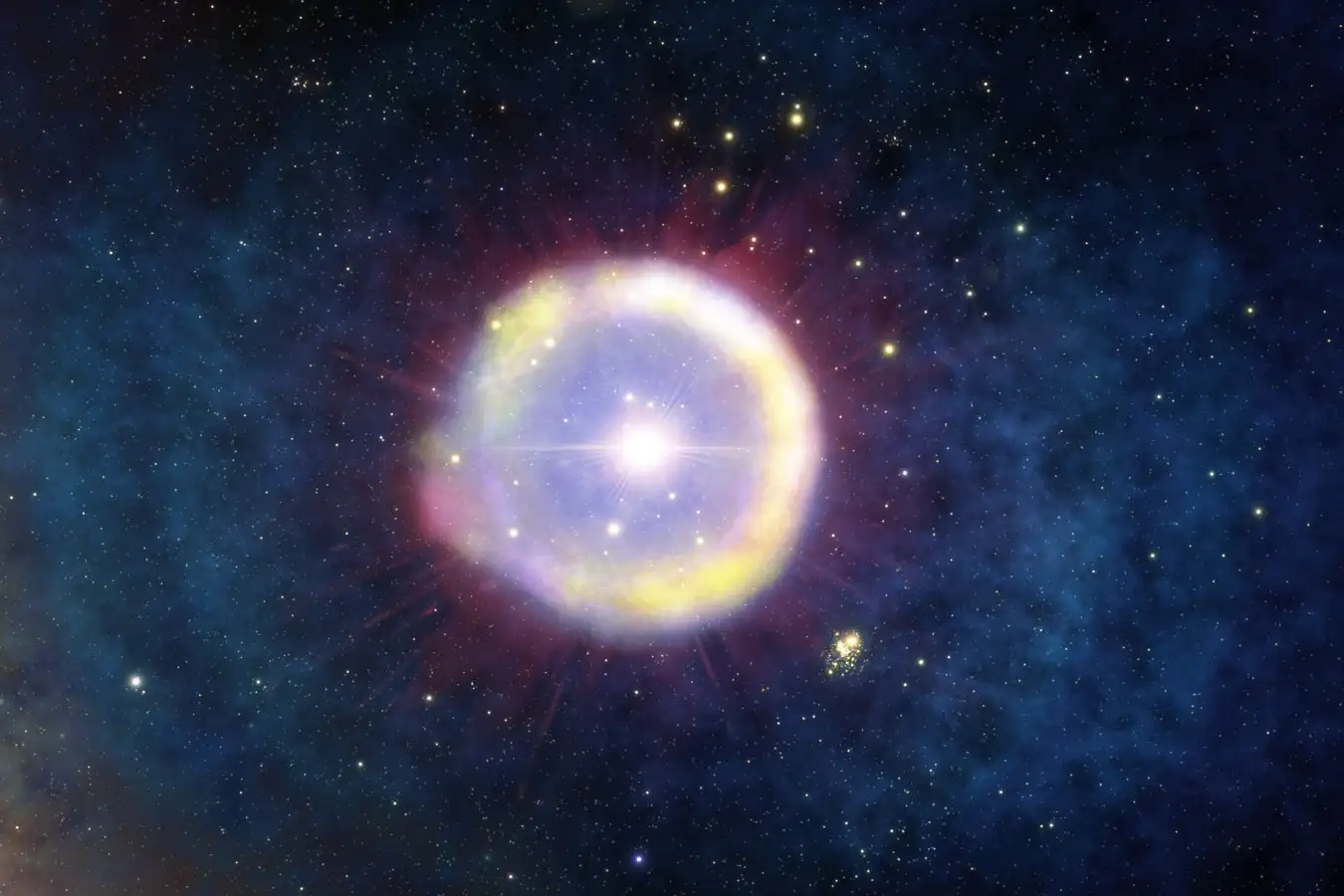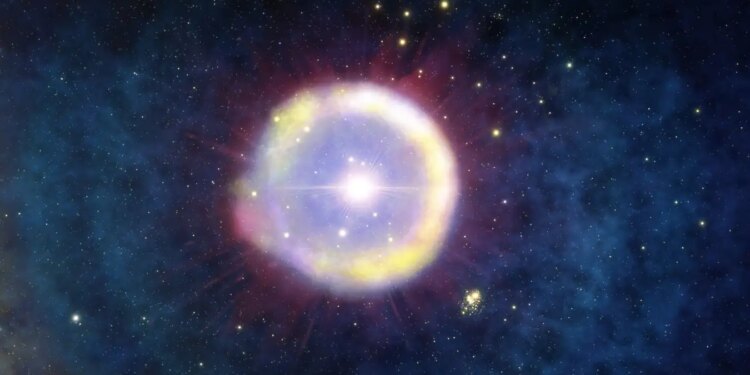
Artist’s impression of Population III stars as they would have appeared a 100 million years after the big bang
NOIRLab/NSF/AURA/J. da Silva/Spaceengine/M. Zamani
We may have finally seen the first generation of stars. Astronomers have been looking for these primordial behemoths, called Population III stars, for decades. Now they have found what may be the most promising candidate yet.
Population III stars are expected to be very different from modern, or Population I, stars. They would have formed from pristine hydrogen and helium gas, before heavier elements were distributed throughout the universe by supernovae and powerful stellar winds. They are also expected to be bigger and hotter than modern stars.
That is exactly what Eli Visbal at the University of Toledo in Ohio and his colleagues found when they did a detailed analysis of previous James Webb Space Telescope (JWST) observations of a distant galaxy called LAP1-B. It is at a redshift – a number that astronomers use to measure distance – of 6.6, which means we see LAP1-B as it was just about 800 million years after the big bang. That is so far away the only reason we could spot it at all is because its light was magnified by a nearer galaxy cluster in a process called gravitational lensing.
“There should be tons and tons of these all over the observable universe, but we can only look sort of under the lamppost of this cluster that’s magnifying the light,” says Visbal. When he and his team calculated how many Population III star clusters we should find at this redshift, they found that it should be about one – which is what they saw. “Our abundance estimate perfectly agreed with [the previous research team] finding one where they did,” he says.
Another point in LAP1-B’s favour is it only seems to have enough stars to make up a few thousand times the mass of the sun. Other candidates for Population III galaxies tend to have much higher stellar masses, inconsistent with simulations of how clusters of Population III stars form. “This is the best candidate we have so far,” says Visbal.
Most Population III stars are expected to have lived and died between about 100 and 400 million years after the big bang, after which there would have been enough heavy elements in the cosmos to form stars that are more similar to the ones we see today. “This object ticks many of the boxes, but I am a bit sceptical because it’s late in the game for these stars to be around, and there may be alternatives that might do the job as well,” says Ralf Klessen at Heidelberg University in Germany. “It would be super interesting to see a Population III star cluster, but statistically this would certainly be an outlier.”
However, it is possible pockets of pristine hydrogen and helium could survive longer and form Population III stars later on, Visbal says.
“LAP-B1 is an extremely interesting candidate, but it is still far from having the clear, unambiguous signatures that we expect for a clean Population III detection,” says Roberto Maiolino at the University of Cambridge. “[For these to be Population III stars], it must be an extremely lucky combination of different factors, each of them extremely rare on its own, and much more rare when they have to happen together.” It will take deeper observations and more detailed simulations to find out for sure if LAP1-B marks the first time we have seen these strange stars.
This is important because understanding Population III stars is crucial to figuring out how and when the first heavy elements formed. “They can tell us how the chemistry of the universe evolved from just hydrogen and helium to all the cool chemistry and life and everything that we have in the universe today,” says Visbal. Population III stars were the first building blocks of the complexity that surrounds us now.
Topics:
Source link : https://www.newscientist.com/article/2502109-we-may-have-found-a-surprisingly-nearby-cluster-of-primordial-stars/?utm_campaign=RSS%7CNSNS&utm_source=NSNS&utm_medium=RSS&utm_content=home
Author :
Publish date : 2025-11-03 10:00:00
Copyright for syndicated content belongs to the linked Source.




